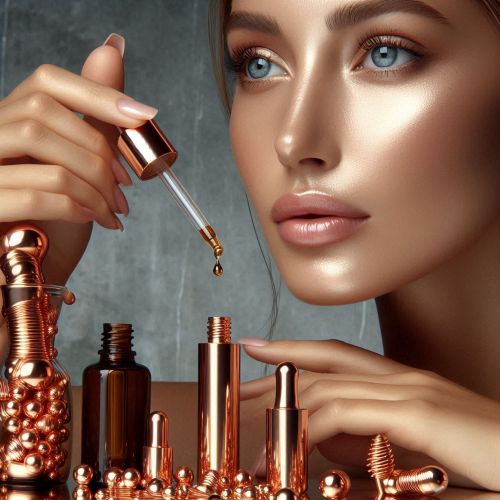-
 DIY: Video master classes
DIY: Video master classes
-
 Aromatherapy
Aromatherapy
-
 Felting master classes
Felting master classes
-
 Eating at home
Eating at home
-
 DIY cosmetics for children
DIY cosmetics for children
-
 Cooking recipes
Cooking recipes
-
 Detergents, cleaning products with your own hands
Detergents, cleaning products with your own hands
-
 Soap making as a business
Soap making as a business
-
 Natural cosmetics. Raw materials for cosmetics and soap.
Natural cosmetics. Raw materials for cosmetics and soap.
-
 Natural oils in cosmetics
Natural oils in cosmetics
-
 News
News
-
 Recipes for balms and conditioners
Recipes for balms and conditioners
-
 Bath Bomb Recipes
Bath Bomb Recipes
-
 Cream recipes. Cream making.
Cream recipes. Cream making.
-
 Lotion recipes. Gel recipes.
Lotion recipes. Gel recipes.
-
 Mask recipes
Mask recipes
-
 Soap recipes. Base soap. Soap from scratch.
Soap recipes. Base soap. Soap from scratch.
-
 Recipes for all occasions
Recipes for all occasions
-
 Natural shampoo recipes
Natural shampoo recipes
-
 Healthy Nutrition Recipes
Healthy Nutrition Recipes
-
 Scrub recipes. Massage tiles. Ubtan
Scrub recipes. Massage tiles. Ubtan
-
 DIY candles
DIY candles
-
 Reference materials, questions, tips
Reference materials, questions, tips
-
 Startup - soap production
Startup - soap production
-
 Hair care. Tips, recipes
Hair care. Tips, recipes
-
 Facial skin care. Cleansers.
Facial skin care. Cleansers.
-
 Body care. Tips, recipes
Body care. Tips, recipes
-
 Photo Reviews
Photo Reviews
-
 Chocolate Handmade
Chocolate Handmade
Serum with copper peptides: powerful antioxidant protection and skin strengthening
 In the realm of advanced skincare, copper peptides have emerged as a powerhouse ingredient, offering potent antioxidant protection and significant skin-strengthening benefits. Creating your own copper peptide serum allows for a personalized approach, ensuring maximum efficacy and avoiding potentially harmful additives found in some industrial products. This article will guide you through the process of formulating a high-quality copper peptide serum, detailing its properties, providing three distinct recipes, and offering essential tips for optimal results.
In the realm of advanced skincare, copper peptides have emerged as a powerhouse ingredient, offering potent antioxidant protection and significant skin-strengthening benefits. Creating your own copper peptide serum allows for a personalized approach, ensuring maximum efficacy and avoiding potentially harmful additives found in some industrial products. This article will guide you through the process of formulating a high-quality copper peptide serum, detailing its properties, providing three distinct recipes, and offering essential tips for optimal results.
Why Choose a Homemade Copper Peptide Serum?
Industrial copper peptide serums, while effective, can sometimes contain unnecessary fillers, fragrances, and preservatives. By crafting your own, you can:
- Control Ingredients: Select only the highest quality ingredients, avoiding potential irritants.
- Customize Formulation: Adjust the concentration of copper peptides and other actives to suit your skin's specific needs.
- Maximize Freshness: Homemade serums are made fresh, ensuring the potency of the copper peptides.
- Reduce Costs: Over time, creating your own serum can be more economical than purchasing expensive commercial products.
- Minimize Environmental Impact: Reduce plastic waste by avoiding excessive packaging.
Understanding the Key Ingredients:
- Copper Peptides (GHK-Cu): These peptides stimulate collagen and elastin production, promote wound healing, reduce inflammation, and provide powerful antioxidant protection.
- Hyaluronic Acid: A humectant that attracts and retains moisture, plumping the skin and reducing fine lines.
- Niacinamide (Vitamin B3): Improves skin barrier function, reduces redness, minimizes pores, and provides additional antioxidant benefits.
- Aloe Vera Gel: Soothes and hydrates the skin, promoting healing and reducing irritation.
- Glycerin: A humectant that draws moisture to the skin, enhancing hydration.
- Preservatives: Prevent bacterial and fungal growth, ensuring the serum's safety and longevity. Examples include phenoxyethanol and Geogard ECT.
- Distilled Water: Provides a pure, uncontaminated base for the serum.
Recipe 1: Basic Copper Peptide & Hyaluronic Acid Serum
Ingredients:
- 50ml Distilled Water
- 10ml Hyaluronic Acid Solution (1% or 2%)
- 5ml Copper Peptide Solution (1%)
- 3ml Glycerin
- 1ml Preservative (Phenoxyethanol)
Instructions:
- Hydrate Hyaluronic Acid: In a clean glass beaker, combine the distilled water and hyaluronic acid solution. Stir gently until the hyaluronic acid is fully hydrated.
- Add Glycerin: Add the glycerin to the mixture and stir well.
- Incorporate Copper Peptides: Add the copper peptide solution and stir gently.
- Add Preservative: Add the phenoxyethanol and stir thoroughly.
- Package: Transfer the serum to a clean, dark glass bottle with a dropper or pump.
Recipe 2: Copper Peptide, Niacinamide, & Aloe Vera Serum
Ingredients:
- 40ml Aloe Vera Gel
- 10ml Distilled Water
- 5ml Copper Peptide Solution (1%)
- 5ml Niacinamide Solution (10%)
- 2ml Glycerin
- 1ml Geogard ECT
Instructions:
- Combine Aloe Vera and Water: In a clean beaker, combine the aloe vera gel and distilled water. Stir gently.
- Add Niacinamide: Add the niacinamide solution and stir well.
- Incorporate Copper Peptides: Add the copper peptide solution and stir gently.
- Add Glycerin: Add the glycerin and mix well.
- Add Preservative: Add the Geogard ECT and stir thoroughly.
- Package: Transfer the serum to a clean, dark glass bottle with a dropper or pump.
Recipe 3: Gel-Based Copper Peptide Serum
Ingredients:
- 60ml Distilled Water
- 10ml Hyaluronic Acid Solution (1%)
- 5ml Copper Peptide Solution (1%)
- 3ml Glycerin
- 1g Xanthan Gum
- 1ml Phenoxyethanol
Instructions:
- Hydrate Xanthan Gum: In a small container, mix xanthan gum with glycerin until a smooth paste forms.
- Heat Distilled Water: Heat the distilled water to approximately 70°C (158°F).
- Create Gel: Slowly add the xanthan gum/glycerin mixture to the heated water while stirring vigorously with a stick blender until a gel forms.
- Cool and Add Hyaluronic Acid: Allow the gel to cool to room temperature, then add the hyaluronic acid solution. Stir well.
- Incorporate Copper Peptides: Add the copper peptide solution and stir gently.
- Add Preservative: Add the phenoxyethanol and stir thoroughly.
- Package: Transfer the serum to a pump bottle.
Recommendations for Use:
- Apply the serum to clean, toned skin morning and night.
- Dispense a small amount of serum onto your fingertips and gently massage it into your face and neck.
- Follow with a moisturizer to lock in hydration.
- Perform a patch test before applying any new serum to your entire face.
- Copper peptides can sometimes cause a temporary blue tint on the skin. Use sparingly and allow to fully absorb.
Storage:

- Store your homemade serum in a cool, dark place away from direct sunlight.
- Use dark glass bottles to protect the serum from light degradation.
- Keep the serum tightly sealed to prevent oxidation.
- Refrigeration can extend the shelf life of your serum, especially if it contains natural ingredients.
- A preservative is vital to stop mold and bacteria growth.
- Generally, a homemade serum with a preservative will last 3-6 months.
Advantages Over Industrial Analogues:
- Customized Concentrations: Adjust the copper peptide concentration to your skin's tolerance and needs.
- Pure Ingredients: Avoid unnecessary fillers, fragrances, and potentially irritating preservatives.
- Fresh Formulation: Maximize the potency of copper peptides by creating the serum fresh.
- Targeted Benefits: Combine copper peptides with other beneficial ingredients to address specific skin concerns.
- Cost-Effective: Save money by creating your own high-quality serum.
By crafting your own copper peptide serum, you can harness the powerful antioxidant and skin-strengthening benefits of this remarkable ingredient, achieving a healthier, more youthful complexion.
Mylo Opt Cosmetics Blog – Your Reliable Guide to Beauty and Care
Welcome to the Mylo Opt cosmetics blog! Here, you will find valuable advice, interesting recipes, and professional recommendations for creating soap, cosmetics, and candles with your own hands. Our blog is designed for anyone passionate about natural cosmetics, looking for new ideas, and wanting to learn more about producing high-quality skincare and haircare products. We share tested recipes, useful tips, and the latest news from the world of cosmetics.
Why Choose the Mylo Opt Cosmetics Blog?
Mylo Opt is not just an online store; it is a community of people passionate about creating natural cosmetics. Here are a few reasons why our blog will be useful to you:
- Experience and Expertise: Our authors are experienced cosmetologists, soap makers, and aromatherapy specialists. We share reliable and tested recipes that have undergone thorough testing and received positive feedback.
- Credibility and Authority: We ensure that all information in our blog is up-to-date and reliable. We reference scientific research and verified sources so that you can trust the quality of the information provided.
- Reader-Focused: Our content is tailored to you – our readers. We strive to answer your questions, solve your problems, and inspire new achievements in the world of natural cosmetics.
Popular Products from the Mylo Opt Online Store
Before we move on to recipes and tips, let us introduce you to the most popular products from our online store, which will help you create high-quality and natural cosmetics:
- Soap Bases: High-quality soap bases allow you to create beautiful and beneficial handmade soaps. We offer glycerin bases, bases with added oils and extracts, as well as transparent and white bases.
- Fragrance Oils and Fragrances: Give your products a unique scent with our fragrance oils and fragrances. We offer a wide range of scents – from fresh and floral to spicy and woody.
- Essential Oils: Essential oils are natural components that not only add fragrance to products but also offer beneficial properties for the skin and hair. Our range includes lavender, mint, eucalyptus, lemon, and many other oils.
- Active Ingredients: Vitamins, antioxidants, hyaluronic acid, and other active ingredients help improve the properties of your cosmetics. We offer only tested and high-quality components.
- Pigments and Dyes: Give your products bright and lasting colors with our pigments and dyes. They are safe for the skin and suitable for use in soap, cosmetics, and candles.
- Emulsifiers and Thickeners: To create creams and lotions, you will need emulsifiers and thickeners. We offer quality ingredients that help you achieve the desired consistency and stability of the product.
- Soap and Candle Molds: Create unique items with our soap and candle molds. Our range includes molds of various sizes and designs.
- Everything for Candles: Wax, wicks, fragrances, and dyes for candles – we have everything you need to create beautiful and fragrant candles.
Recipes and Tips for Making Handmade Soap
Cold Process Soap for Beginners
Making cold process soap is an exciting process that allows you to control all the ingredients and create unique recipes. Here is one simple cold process soap recipe for beginners:
Ingredients:
- 500 g olive oil
- 300 g coconut oil
- 200 g palm oil
- 150 g castor oil
- 120 g lye (sodium hydroxide)
- 300 ml distilled water
- Essential oils (lavender, mint, eucalyptus)
- Pigments or natural dyes (optional)
Process:
- Prepare all ingredients and tools. Always use protective gloves and goggles, as lye can be dangerous.
- Weigh the lye and water. Slowly add the lye to the water, stirring until it fully dissolves. Allow the mixture to cool to 40-45°C.
- Weigh the oils and melt them in a water bath. When the oils and lye solution reach the same temperature (about 40-45°C), slowly pour the lye into the oils, stirring constantly.
- Use an immersion blender to mix until trace (when the mixture thickens and leaves a trail when stirred).
- Add essential oils and pigments if desired. Mix thoroughly.
- Pour the mixture into a prepared mold and cover with a towel. Let the soap harden for 24-48 hours.
- Remove the soap from the mold and cut it into bars. Allow the soap to cure for 4-6 weeks before use.
Homemade Cosmetics Recipes
DIY Moisturizing Cream
Creating a moisturizing cream at home allows you to control the ingredients and adapt the recipe to your needs. Here is a simple recipe for a moisturizing cream:
Ingredients:
- 50 ml rose water
- 50 ml distilled water
- 10 g emulsifier (e.g., Olivem 1000)
- 10 ml jojoba oil
- 5 ml avocado oil
- 5 drops lavender essential oil
- 2 drops tea tree essential oil
Process:
- Weigh all the ingredients.
- In a water bath, melt the emulsifier with the oils until smooth.
- Separately, heat the water phase (rose water and distilled water) to the same temperature as the oil phase.
- Slowly pour the water phase into the oil phase, stirring constantly.
- Use an immersion blender to emulsify until you achieve a creamy consistency.
- Add essential oils and mix thoroughly.
- Pour the cream into a sterilized jar and allow it to cool.
DIY Candle Recipes
Aromatic Soy Candle
Creating aromatic candles is a creative process that allows you to experiment with scents and designs. Here is a simple recipe for a soy candle:
Ingredients:
- 200 g soy wax
- 20 ml fragrance oil (e.g., vanilla or lavender)
- Wick for candles
- Dyes (optional)
- Glass or metal candle mold
Process:
- Melt the soy wax in a water bath until liquid.
- Add the fragrance oil and dyes if desired. Mix thoroughly.
- Secure the wick in the center of the candle mold.
- Slowly pour the melted wax into the mold, holding the wick.
- Allow the candle to fully harden (about 24 hours).
- Trim the wick to the desired length and enjoy your aromatic candle.
Tips for Beginners in Cream Making
- Learn the Basics: Before starting to create creams, it is important to learn the basic principles and ingredients used in cream making.
- Experiment with Formulas: Do not be afraid to experiment with different ingredients and proportions to find the perfect formula for your skin.
- Use Quality Ingredients: The effectiveness and safety of your product depend on the quality of the ingredients. Always choose tested and natural components.
- Maintain Hygiene: It is important to maintain cleanliness and sterility when creating cosmetics to avoid contamination and spoilage of the product.
- Start with Simple Recipes: For beginners, it is best to start with simple recipes to master the basic techniques and principles of cream making.
Conclusion
Our Mylo Opt cosmetics blog is your reliable source of information and inspiration in the world of natural cosmetics. We share useful tips, tested recipes, and the latest news to help you create quality and effective products for skin, hair, and home care. Subscribe to our blog, follow the updates, and discover new opportunities in the world of natural cosmetics with Mylo Opt!






